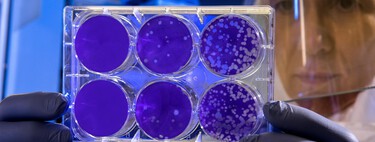As cases continue to be identified across the northern hemisphere, the investigation into the origin of this mysterious canister of childhood hepatitis continues. In the last hours, as we confirmed that approximately half of the patients they tested positive in adenoviruses, the adenovirus 41 hypothesis has gained strength. However, the pieces still do not fit. Why do we suspect him? Why does it seem like something is missing?
What are human adenoviruses? Adenoviruses are one of the most common pathogens in humans and we usually find them in respiratory, eye, gastrointestinal, urinary diseases and many more. To give us an idea, at present, we have identified 103 subtypes of human adenoviruses. This means that there is an enormous diversity of diseases and symptoms linked to adenoviruses and that the potential routes of infection are very varied (airborne transmission, by contact or even by water).
However, he is a strange suspect. When we talk about adenoviruses we are not talking about rare viruses that appear out of nowhere. On the contrary, it is a family of pathogens studied over and over again and, therefore, although there are some indications to think about them, the experts show their surprise and insist on the need to be cautious.
Why do we suspect adenovirus 41? As explained by the health authorities, 74 (of the 169) patients studied so far tested positive for different adenoviruses and 18 of them for adenovirus 41, specifically. It’s inconclusive and doesn’t fit very well, but it’s a plausible hypothesis.
Serotype 41 of the adenovirus species F is behind between 1.2 and 15% of pediatric gastroenteritis. That is, it creates a picture of fever, vomiting and diarrhea. A condition that can be serious and require hospitalization, but rather associated with severe diarrhea (and not liver problems). However, some cases of hepatitis in immunosuppressed children have been documented, but nothing similar to what we have seen.
Thus, as explained This Monday, Meera Chand, director of emerging infections at the United Kingdom Health Security Agency (UKHSA), is working on the hypothesis that there is a “cofactor” that causes “normal adenovirus infections to be more serious or that trigger more serious immunopathology” in young children.
A cofactor? Yes, the main idea of work today is that, if it is adenovirus 41, there must be something else, a cofactor that enhances its effects. This cofactor can be almost anything: from an increase in immunological susceptibility after the pandemic to a co-infection (19 cases have tested positive for adenovirus and SARS-CoV-2) or a cross-effect with some environmental substance, drug or toxic.
is still working. We are in a very initial phase of the investigation and, except for very obvious things such as the vast majority of children have not been vaccinated against covid-19, it is difficult to find clear common elements. Thus, apart from the adenovirus, It’s not discarded that we are facing a new unidentified subtype of adenovirus, the effects of a new variant of coronavirus or even another virus that we have not yet been able to identify yet.
Image | CDC
George is Digismak’s reported cum editor with 13 years of experience in Journalism
